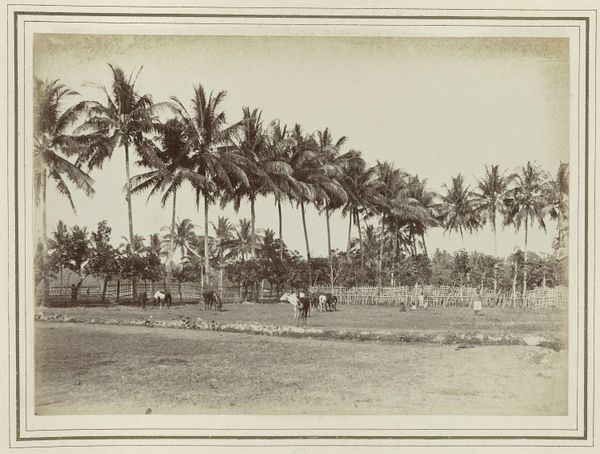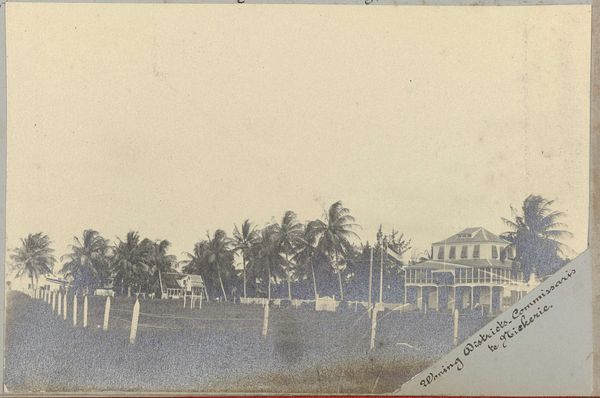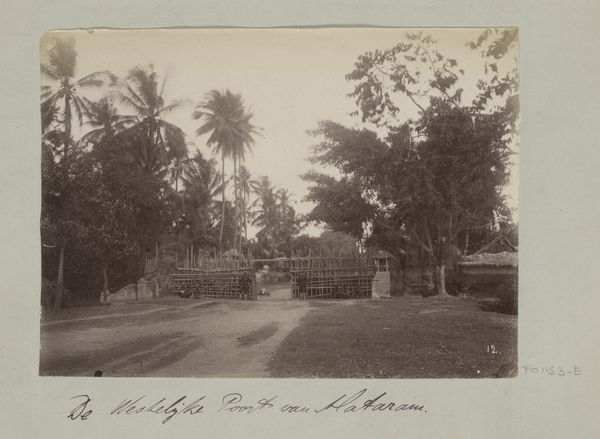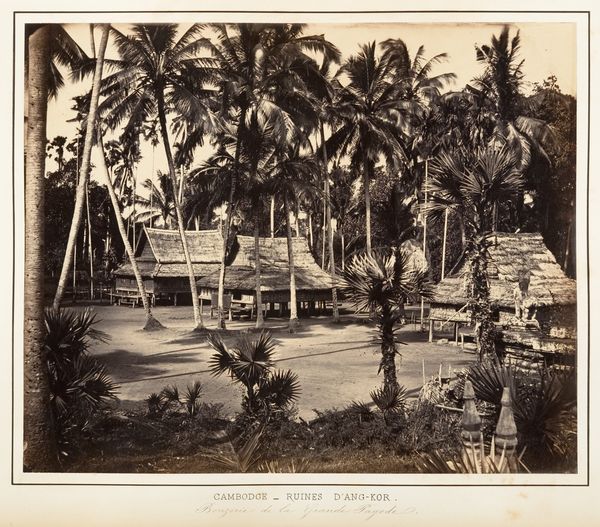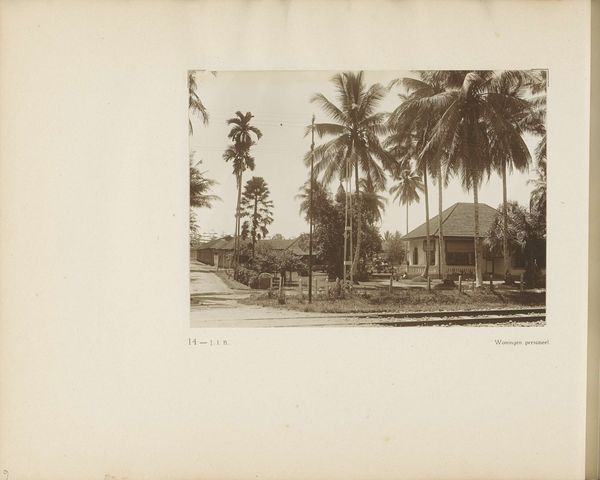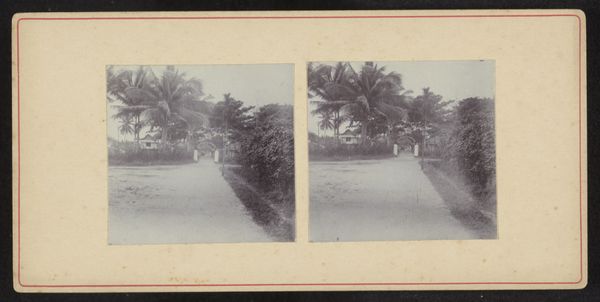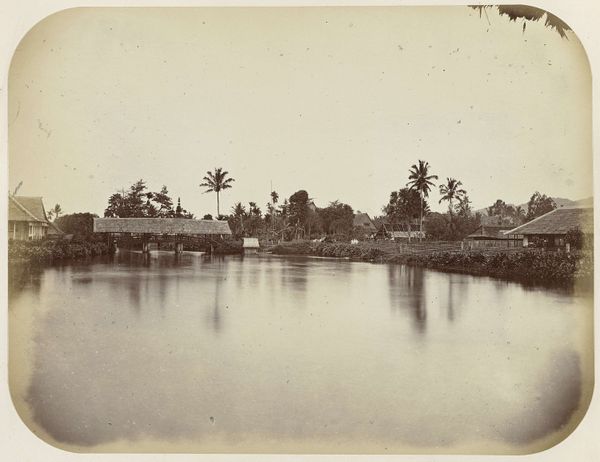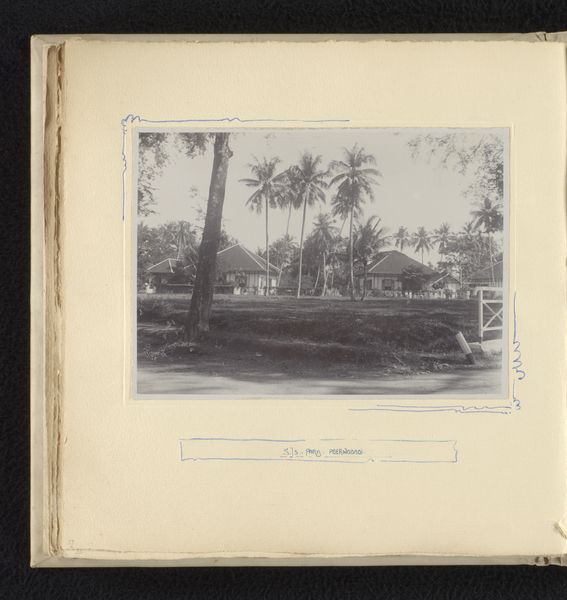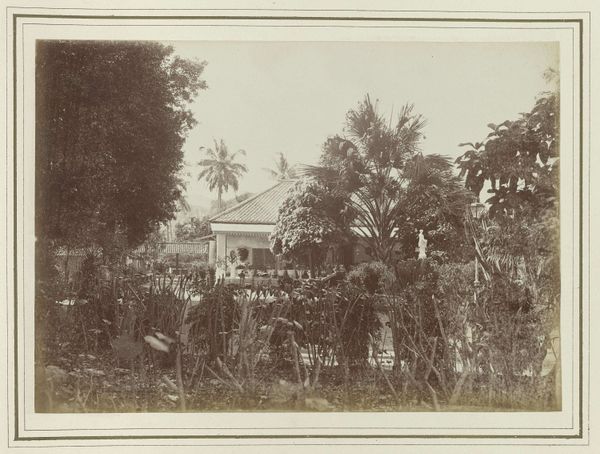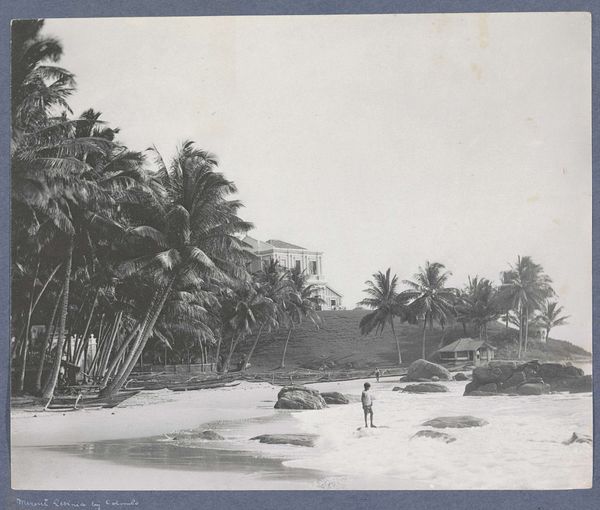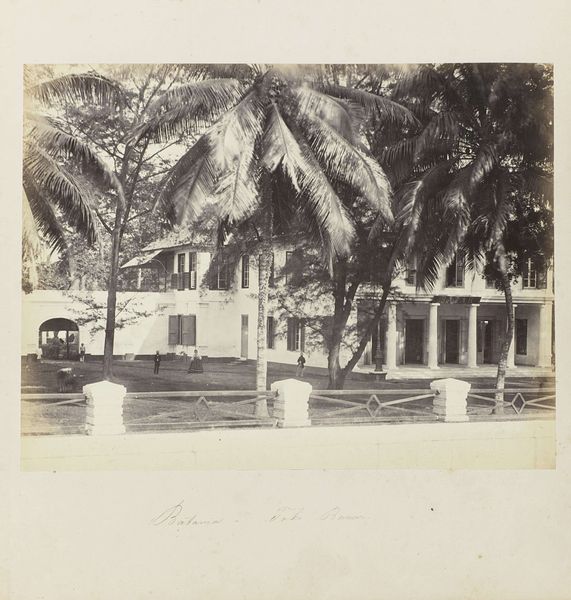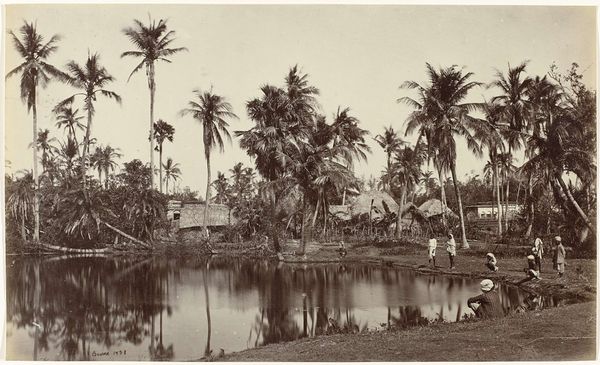
albumen-print, photography, albumen-print
#
albumen-print
#
landscape
#
photography
#
albumen-print
Dimensions: height 119 mm, width 173 mm
Copyright: Rijks Museum: Open Domain
Curator: The image before us, captured by Christiaan Johan Neeb before 1898, presents a scene titled "Bivak te Ampenan ten tijde van de Lombok-expeditie in 1894." It is an albumen print, depicting a site-specific encampment. Editor: My immediate impression is of a landscape bathed in a sort of solemn stillness, primarily organized around a strong horizontal axis bisecting the scene between land and sky, punctuated by the vertical assertion of the palm trees. The monochromatic tones and grainy texture lend it a somber, almost ghostly air. Curator: Indeed. It’s crucial to view this work not just as a picturesque scene, but as a document deeply implicated in the history of Dutch colonialism in Indonesia. The “Lombok-expeditie” was a brutal military campaign. This “bivak,” or encampment, represents the physical manifestation of colonial power and occupation. Editor: So the very structure of the image is encoding social power. The long horizontal perspective leads the viewer's eye, enforcing the feeling of the occupation's reach. Even the tonal range – the varying intensities of light – articulates a visual hierarchy of near and far, claiming visual dominion. Curator: Precisely. Note the seemingly tranquil scene. Palm trees, modest architecture – they mask the violence inherent in the colonial project, presenting a facade of order and control where immense suffering occurred. Whose perspective does this photograph represent, and what narrative does it suppress? The visual vocabulary becomes a tool for normalizing exploitation. Editor: Absolutely. And in that vein, observe the distribution of objects in the photographic plane—it adheres closely to classical compositional ideals, even using naturally occurring forms in the trees to create a perspectival funnel towards the small buildings which is the standard painterly trick that belies a conscious artistic application by the photographer. Curator: Which further camouflages the disruptions to indigenous life through visual idealization. This wasn’t simply a neutral recording of a place, but a calculated construction meant to justify and perpetuate colonial domination. Editor: Thinking structurally about the image itself, there's this interesting tension: while the photographer arranges nature in conventional terms, that compositional order ends up emphasizing how human structure interrupts it. Colonial intervention rendered photographically as formal disruption? Curator: An insightful reading. It reminds us that even in seemingly objective documents like this photograph, inherent power dynamics are at play, informing both what is shown and, crucially, what is omitted. Editor: Well, considering it now, maybe the disquiet I first felt in it was caused by that latent tension between art and history. Thanks for elucidating that.
Comments
No comments
Be the first to comment and join the conversation on the ultimate creative platform.
